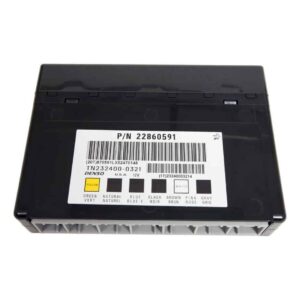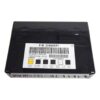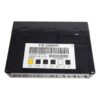Restore Your Tahoe’s Electrical System with a Reliable BCM Solution
If you’re dealing with bizarre electrical issues in your 2010 Chevy Tahoe—like flickering lights, malfunctioning power windows, or a security system that has a mind of its own—you’re likely facing a failing Body Control Module (BCM). As the central hub for your vehicle’s body electronics, a faulty BCM can create a cascade of frustrating and unpredictable problems. This isn’t just an annoyance; it can affect your vehicle’s safety and reliability. I’ve seen it countless times in the shop: a perfectly good engine that won’t start or a vehicle that acts possessed, all because this one component has failed.
This replacement Body Control Module, part number 25892622, is the definitive solution to get your truck back to normal. We take the guesswork and high dealership costs out of the equation. By providing us with your vehicle’s VIN, we perform a professional cloning service, transferring your vehicle’s specific data to this replacement unit. It arrives at your door ready for installation, loaded with the latest GM software updates, eliminating the need for expensive dealer programming. This is the straightforward, reliable fix you’ve been looking for.
A Technician’s Notebook: The Tahoe with a Mind of Its Own
A customer brought in a 2010 Tahoe with a laundry list of complaints: the radio would turn on and off, the interior lights would pulse randomly, and occasionally the power locks wouldn’t respond. They had already replaced the battery and checked the main grounds. After hooking up my scan tool, I noticed several U-codes (communication errors) pointing to a network disruption. The tell-tale sign was the intermittent nature of the faults across unrelated systems. This is a classic symptom of an internal BCM failure. We confirmed the diagnosis by monitoring data streams and swapped in a pre-programmed BCM. The electrical gremlins vanished instantly, restoring all functions. This case highlights how a single module can cause widespread, confusing issues.
Common Signs of a Failing BCM
- ✔ Erratic or non-functional interior and exterior lights.
- ✔ Power windows, door locks, or mirrors operating intermittently or not at all.
- ✔ The security system acting up, causing no-start conditions or false alarms.
- ✔ Dashboard warning lights (like ABS or Airbag) illuminating without a clear cause.
- ✔ Communication error codes, often in the U-series (e.g., U0140 – Lost Communication With Body Control Module).
- ✔ Horn or wipers activating unexpectedly.
A Straightforward Guide to Installation
- ✔ Safety First: Always disconnect the negative terminal from your vehicle’s battery and wait a few minutes before beginning.
- ✔ Locate the BCM: On a 2010 Tahoe, the Body Control Module is typically located under the driver’s side of the dashboard, near the steering column.
- ✔ Remove the Old Module: Carefully unplug the electrical connectors. They have locking tabs that need to be depressed. Once disconnected, unbolt or unclip the module from its mounting bracket.
- ✔ Install the New Module: Seat the replacement BCM into the mounting bracket and securely plug in all electrical connectors. You should hear a click as they lock into place.
- ✔ Reconnect and Test: Reconnect the negative battery terminal. Turn the key to the ‘On’ position and test all related functions—lights, locks, windows, etc.—to ensure proper operation.
Important Post-Installation Information
While our cloning service makes this a near plug-and-play repair, some GM vehicles require additional steps after the BCM is installed. Please be aware of the following potential procedures:
- Airbag System Sync: If your airbag warning light is on after installation, a professional scan tool is needed to perform the ‘Setup SDM Primary Key in BCM’ procedure. This syncs the new BCM with the airbag system.
- Brake Pedal Position Relearn: Some models may require a brake pedal position sensor relearn to ensure brake lights and stability control systems function correctly.
Disclaimer: Vehicle systems vary. For procedures specific to your vehicle, always consult a factory service manual or a qualified automotive technician.
Will This Fit My Vehicle?
This BCM is a direct replacement for part number 25892622 and is compatible with a wide range of GM vehicles. Please verify your original part number or consult the list below. This module fits various options for models including:
This module replaces the following part numbers: 10382479, 15093910, 15276271, 15299986, 15819552, 15828601, 15837419, 15872388, 15872421, 15880684, 15921352, 15921353, 15948438, 15948439, 20815898, 20839063, 20864767, 20864768, 20921435, 20921436, 20935349, 22860591, 25826124, 25826125, 25847588, 25847589, 25892622, 25910474, 25934762, 25934763, 95151084.
Frequently Asked Questions
What is a cloning service and why do I need it?
Our cloning service transfers all the essential data—like your VIN, mileage, and security information—from your original BCM to this replacement unit. This makes the module plug-and-play, saving you from a costly and time-consuming trip to the dealership for programming.
Do I need to send my original BCM to you?
Yes, our cloning service requires your original module to extract the necessary vehicle data. After purchase, we will provide instructions for sending it to us. We always return your original module along with the newly programmed replacement.
Is this a simple DIY job?
For many DIY enthusiasts with basic tools, this is a manageable repair. The BCM is typically accessible under the dash. The main challenge is accessing the part, but the physical swap is straightforward. Please review our installation guide and be aware of potential post-installation procedures.
What happens to my old part? Is there a core charge?
There is no core charge. We use your original module for the data transfer and then return it to you with your ready-to-install replacement. We do not keep your old part.
Will this fix my specific problem?
This module corrects issues directly caused by a failing BCM, such as the symptoms listed above. If your vehicle’s problems are due to other failing components, wiring issues, or bad grounds, this part will not resolve them. Proper diagnosis is key.



